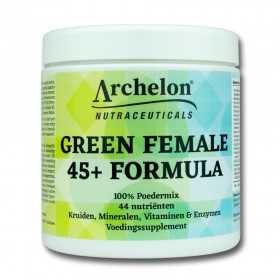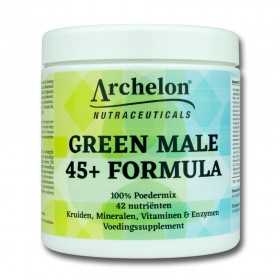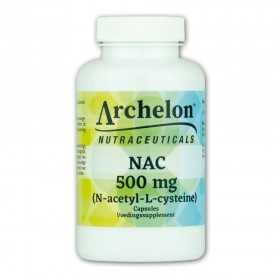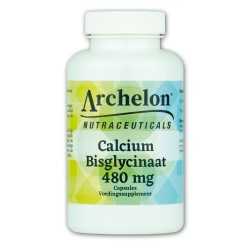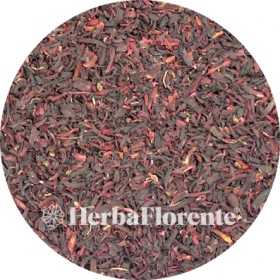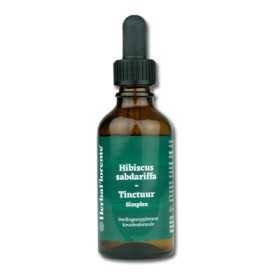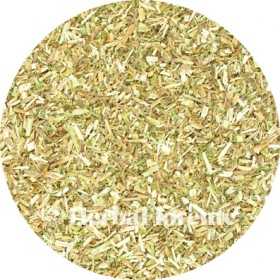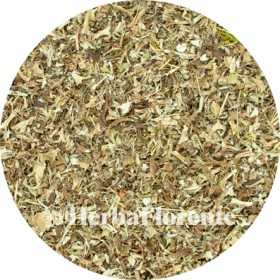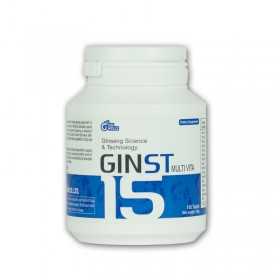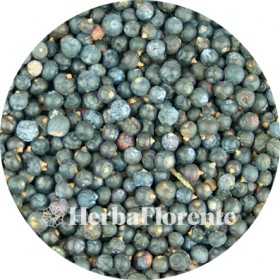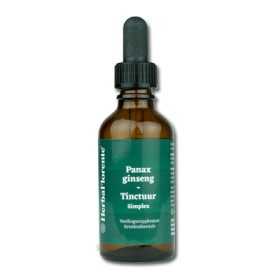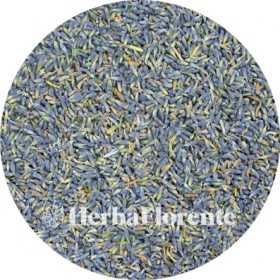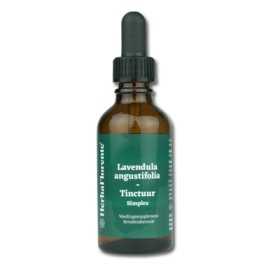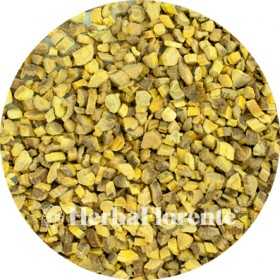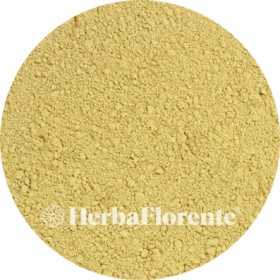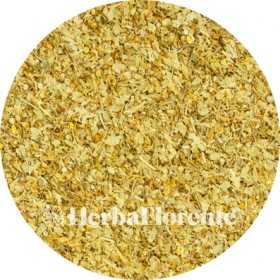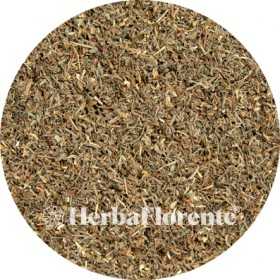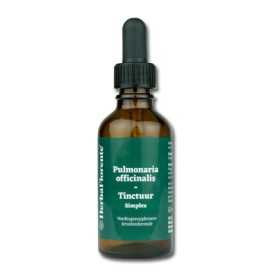Airways
There are 160 products.
Heartwort Tincture - Leonurus cardiaca Tincture
Single herbal tincture made with dried herb of Leonurus cardiaca (Heartwort).
Heartwort (Leonurus cardiaca) is a fragrant perennial plant that belongs to the Lamiaceae family. Originating in Central Asia, this plant has spread throughout the world.
The leaves are suitable for seasoning pea and lentil soup, and were also used in the past to brew beer. This plant has been used for centuries for its medicinal properties for heart problems and muscle cramps.
The plant grows to a height of 30-90 cm and forms rhizomes and square stems with scattered hairs. The leaves, which are medium green in color, have three to seven lobes and are downy hairy on the underside.
Heartwort (Leonurus cardiaca) is a fragrant perennial plant that belongs to the Lamiaceae family. Originating in Central Asia, this plant has spread throughout the world.
The leaves are suitable for seasoning pea and lentil soup, and were also used in the past to brew beer. This plant has been used for centuries for its medicinal properties for heart problems and muscle cramps.
The plant grows to a height of 30-90 cm and forms rhizomes and square stems with scattered hairs. The leaves, which are medium green in color, have three to seven lobes and are downy hairy on the underside.
€10.95
Hibiscus - Hibiscus sabdariff
The Hibiscus (Hibiscus sabdariffa) is traditionally used in hot and cold drinks, as a flavoring and coloring agent in the food industry, and as a herbal remedy for its ability to reduce fatigue and promote cardiovascular health.
Hibiscus sabdariffa L. is an annual shrub that can grow more than two meters high. The shrub usually has smooth, red stems and cream or pale yellow flowers that turn pink when they wilt at the end of the day. At that time, a characteristic red calyx grows, which is fleshy, crispy and juicy. This calyx turns brown and bursts open when it is dry and grown. The calyx, stems and leaves have a sour taste reminiscent of cranberries.
Hibiscus sabdariffa L. is an annual shrub that can grow more than two meters high. The shrub usually has smooth, red stems and cream or pale yellow flowers that turn pink when they wilt at the end of the day. At that time, a characteristic red calyx grows, which is fleshy, crispy and juicy. This calyx turns brown and bursts open when it is dry and grown. The calyx, stems and leaves have a sour taste reminiscent of cranberries.
€2.25
From: €2.25
Hibiscus Tincture - Hibiscus sabdariffa Tincture
Single herbal tincture made with dried flower of Hibiscus sabdariffa (Hibiscus).
The Hibiscus (Hibiscus sabdariffa) is traditionally used in hot and cold drinks, as a flavoring and coloring agent in the food industry, and as a herbal remedy for its ability to reduce fatigue and promote cardiovascular health.
The Hibiscus (Hibiscus sabdariffa) is traditionally used in hot and cold drinks, as a flavoring and coloring agent in the food industry, and as a herbal remedy for its ability to reduce fatigue and promote cardiovascular health.
€9.95
Hyssop - Hyssopus officinalis
Hyssop (Hyssopus officinalis) belongs to the Lamiaceae family and is an herb with valuable essential oils.
This striking shrub reaches a height of 30 to 60 cm and has a woody base with ascending branches. The dark green lanceolate leaves are about 2 to 2.5 cm long. During the flowering period, from July to September, hyssop produces small blue/lilac-like lipped flowers that grow in whorls, although some specimens may be white or pink.
This striking shrub reaches a height of 30 to 60 cm and has a woody base with ascending branches. The dark green lanceolate leaves are about 2 to 2.5 cm long. During the flowering period, from July to September, hyssop produces small blue/lilac-like lipped flowers that grow in whorls, although some specimens may be white or pink.
€1.95
From: €1.95
Iceland moss - Cetraria islandicus
Icelandic moss (Cetraria islandica, basionym: Lichen islandicus) is a shrubby lichen belonging to the Parmeliaceae family. This species is extremely rare in the Netherlands and is on the Dutch Red List as critically endangered.
A medicinal effect was attributed to the lichen. It was collected in its entirety for this purpose. Although not known medicinally in ancient times, it did not enter medicine until the 17th century. It was used for rashes, wounds, ulcers and various lung diseases such as bronchitis.
A medicinal effect was attributed to the lichen. It was collected in its entirety for this purpose. Although not known medicinally in ancient times, it did not enter medicine until the 17th century. It was used for rashes, wounds, ulcers and various lung diseases such as bronchitis.
€3.00
From: €3.00
ILHWA GINST15 Multi-Vita - 180 tabl.
The most complete multi-vitamins through the addition of GINST15 extract and FBCx. With GINST15, the ginsenosides are 15x better absorbed into the blood and absorption is 4x faster than with regular ginseng! For example, if you take the standard ginseng, it will take longer than 12 hours for your body to fully absorb it, with the GINST15 extract this takes a maximum of 3 to 4 hours!
FCBx is a fat binder that reduces the fat intake after a meal. Great for a diet and general health.
Multivitamin with GINST15 Ginseng extract and FBCx, a fat binder to reduce fat intake after a meal. Great for diet and general health.
FCBx is a fat binder that reduces the fat intake after a meal. Great for a diet and general health.
Multivitamin with GINST15 Ginseng extract and FBCx, a fat binder to reduce fat intake after a meal. Great for diet and general health.
€32.30
Juniper Berries - Juniper communis
The juniper berry (Juniperus communis) is rich in vitamin C and antioxidants, which occur naturally in its berries. These antioxidants protect our body cells against harmful influences such as pollution and sunlight. In addition, they support digestion and contribute to healthy kidney function and fluid balance.
The juniper is a conifer native to Europe, Asia and America. This tree bears flowers and berries at the same time, which can be green and black. The name Juniperus is derived from the Celtic word 'juneprus', meaning rough, prickly or bitter, and 'communis' meaning plain. Since ancient times, the berries have been used by Greeks and Romans for their health benefits.
The juniper is a conifer native to Europe, Asia and America. This tree bears flowers and berries at the same time, which can be green and black. The name Juniperus is derived from the Celtic word 'juneprus', meaning rough, prickly or bitter, and 'communis' meaning plain. Since ancient times, the berries have been used by Greeks and Romans for their health benefits.
€2.60
From: €2.60
Juniper Berries - Juniper communis - Whole
The juniper berry (Juniperus communis) is rich in vitamin C and antioxidants, which occur naturally in its berries. These antioxidants protect our body cells against harmful influences such as pollution and sunlight. In addition, they support digestion and contribute to healthy kidney function and fluid balance.
The juniper is a conifer native to Europe, Asia and America. This tree bears flowers and berries at the same time, which can be green and black. The name Juniperus is derived from the Celtic word 'juneprus', meaning rough, prickly or bitter, and 'communis' meaning plain. Since ancient times, the berries have been used by Greeks and Romans for their health benefits.
The juniper is a conifer native to Europe, Asia and America. This tree bears flowers and berries at the same time, which can be green and black. The name Juniperus is derived from the Celtic word 'juneprus', meaning rough, prickly or bitter, and 'communis' meaning plain. Since ancient times, the berries have been used by Greeks and Romans for their health benefits.
€2.30
From: €2.30
Korean ginseng Tincture - Panax ginseng Tincture
Single herbal tincture made with dried root of Panax ginseng (Korean ginseng).
Panax Ginseng is a plant with a slow-growing, sturdy root. Panax Ginseng is considered one of the most important medicinal herbs in traditional Chinese medicine. In fact, it is even the world's most famous herb. Panax ginseng has been used for more than 5,000 years to optimize human health and well-being in Asia. In the world of Chinese ethnopharmacology, it has been used for more than 3,000 years.
Panax Ginseng is a plant with a slow-growing, sturdy root. Panax Ginseng is considered one of the most important medicinal herbs in traditional Chinese medicine. In fact, it is even the world's most famous herb. Panax ginseng has been used for more than 5,000 years to optimize human health and well-being in Asia. In the world of Chinese ethnopharmacology, it has been used for more than 3,000 years.
€14.95
Lavender - Lavendula angustifolia
Lavender (Lavandula) is a genus of dwarf shrubs belonging to the Lamiaceae family. These plants are often planted in gardens for their purple flowers and wonderful scent.
An important reason for growing lavender is the lavender oil extracted from the purple flowers. This oil is widely used as a fragrance in cosmetic products such as soap and perfume, and also in aromatherapy.
Lavender flowers are used in cooking, especially as part of Provencal herb mixtures. They can be used fresh or dried to flavor various dishes, such as French cheeses, carrots and tomatoes.
An important reason for growing lavender is the lavender oil extracted from the purple flowers. This oil is widely used as a fragrance in cosmetic products such as soap and perfume, and also in aromatherapy.
Lavender flowers are used in cooking, especially as part of Provencal herb mixtures. They can be used fresh or dried to flavor various dishes, such as French cheeses, carrots and tomatoes.
€5.00
From: €5.00
Lavender Tincture - Lavendula angustifolia Tincture
Single herbal tincture made with dried flower of Lavendula angustifolia (Lavender).
Lavender (Lavandula) is a genus of dwarf shrubs belonging to the Lamiaceae family. These plants are often planted in gardens for their purple flowers and wonderful scent.
An important reason for growing lavender is the lavender oil extracted from the purple flowers. This oil is widely used as a fragrance in cosmetic products such as soap and perfume, and also in aromatherapy.
Lavender flowers are used in cooking, especially as part of Provencal herb mixtures. They can be used fresh or dried to flavor various dishes, such as French cheeses, carrots and tomatoes.
Lavender (Lavandula) is a genus of dwarf shrubs belonging to the Lamiaceae family. These plants are often planted in gardens for their purple flowers and wonderful scent.
An important reason for growing lavender is the lavender oil extracted from the purple flowers. This oil is widely used as a fragrance in cosmetic products such as soap and perfume, and also in aromatherapy.
Lavender flowers are used in cooking, especially as part of Provencal herb mixtures. They can be used fresh or dried to flavor various dishes, such as French cheeses, carrots and tomatoes.
€12.95
Lemon Balm - Melissa officinalis
Lemon balm (Melissa officinalis) is a perennial plant from the Lamiaceae family known for its lemony scent. This plant grows mainly in southern Europe, but can be easily propagated in temperate regions such as the Netherlands and Belgium, as it survives in winter via rhizomes. The plant reaches a height of about 0.5 meters.
Lemon balm has a long history; The plant was already known to various peoples 2000 years ago. The Arabs probably brought the plant to Europe via Spain, after which monasteries initially engaged in its cultivation. Ancient scriptures state that lemon balm leaves warm the stomach, aid digestion, dispel gloom and promote cheerful dreams. The leaves are often used in dishes, tea, oil or creams.
Lemon balm has a long history; The plant was already known to various peoples 2000 years ago. The Arabs probably brought the plant to Europe via Spain, after which monasteries initially engaged in its cultivation. Ancient scriptures state that lemon balm leaves warm the stomach, aid digestion, dispel gloom and promote cheerful dreams. The leaves are often used in dishes, tea, oil or creams.
€2.00
From: €2.00
Lemongrass - Cymbopogon citratus
Lemongrass, also known as sereh (Cymbopogon citratus), belongs to the grass family (Poaceae). This plant is widely used in Asian cuisine, especially in dishes from Thailand, India, Vietnam and Indonesia. Lemongrass thrives in several regions, including India, Africa, Vietnam, Australia and America. In Indonesia it is known as sereh, and this name is also often used in the Netherlands.
The leaves of the lemongrass plant are the culinary stars. They have a refreshing, lemony taste and are not consumed raw. Pieces of lemongrass are often added to dishes during cooking or stewing, after which they are removed before serving.
The leaves of the lemongrass plant are the culinary stars. They have a refreshing, lemony taste and are not consumed raw. Pieces of lemongrass are often added to dishes during cooking or stewing, after which they are removed before serving.
€2.00
From: €2.00
Licorice (Without Bark) - Glycyrrhiza glabra, Liquiritiae
Licorice (Glycyrrhiza glabra) is a versatile herb that plays an important role in Ayurvedic medicine. It is known for its beneficial effects on digestion and maintaining flexible joints, while also soothing the respiratory tract.
This plant is grown in various parts of the world, including Europe, Asia and the Middle East. It is a hardy plant that even thrives in the Netherlands. However, it takes three to four years before the roots can be harvested.
In addition to the roots, the leaves can also be used, for example to make tea. Licorice is widely used in foods and pharmaceuticals because of its sweet taste and other ingredients.
This plant is grown in various parts of the world, including Europe, Asia and the Middle East. It is a hardy plant that even thrives in the Netherlands. However, it takes three to four years before the roots can be harvested.
In addition to the roots, the leaves can also be used, for example to make tea. Licorice is widely used in foods and pharmaceuticals because of its sweet taste and other ingredients.
€2.25
From: €2.25
Licorice - Glycyrrhiza glabra, Liquiritiae
Licorice (Glycyrrhiza glabra) is a versatile herb that plays an important role in Ayurvedic medicine. It is known for its beneficial effects on digestion and maintaining flexible joints, while also soothing the respiratory tract.
This plant is grown in various parts of the world, including Europe, Asia and the Middle East. It is a hardy plant that even thrives in the Netherlands. However, it takes three to four years before the roots can be harvested.
In addition to the roots, the leaves can also be used, for example to make tea. Licorice is widely used in foods and pharmaceuticals because of its sweet taste and other ingredients.
This plant is grown in various parts of the world, including Europe, Asia and the Middle East. It is a hardy plant that even thrives in the Netherlands. However, it takes three to four years before the roots can be harvested.
In addition to the roots, the leaves can also be used, for example to make tea. Licorice is widely used in foods and pharmaceuticals because of its sweet taste and other ingredients.
€2.00
From: €2.00
Licorice Root - 400 mg
Licorice (Glycyrrhiza glabra) is a versatile herb that plays an important role in Ayurvedic medicine. It is known for its beneficial effects on digestion and maintaining flexible joints, while also soothing the respiratory tract.
This plant is grown in various parts of the world, including Europe, Asia and the Middle East. It is a hardy plant that even thrives in the Netherlands. However, it takes three to four years before the roots can be harvested.
In addition to the roots, the leaves can also be used, for example to make tea. Licorice is widely used in foods and pharmaceuticals because of its sweet taste and other ingredients.
This plant is grown in various parts of the world, including Europe, Asia and the Middle East. It is a hardy plant that even thrives in the Netherlands. However, it takes three to four years before the roots can be harvested.
In addition to the roots, the leaves can also be used, for example to make tea. Licorice is widely used in foods and pharmaceuticals because of its sweet taste and other ingredients.
€17.95
Licorice Tincture - Glycyrrhiza glabra Tincture
Single herbal tincture made with dried root of Glycyrrhiza glabra (Licorice).
Licorice (Glycyrrhiza glabra) is a versatile herb that plays an important role in Ayurvedic medicine. It is known for its beneficial effects on digestion and maintaining flexible joints, while also soothing the respiratory tract.
This plant is grown in various parts of the world, including Europe, Asia and the Middle East. It is a hardy plant that even thrives in the Netherlands. However, it takes three to four years before the roots can be harvested.
Licorice (Glycyrrhiza glabra) is a versatile herb that plays an important role in Ayurvedic medicine. It is known for its beneficial effects on digestion and maintaining flexible joints, while also soothing the respiratory tract.
This plant is grown in various parts of the world, including Europe, Asia and the Middle East. It is a hardy plant that even thrives in the Netherlands. However, it takes three to four years before the roots can be harvested.
€9.95
Lijnzaad - Linum usitatissimum
Flaxseed is rich in omega-3 fatty acids, with an impressive 55% alpha-linolenic acid (ALA) content. It also contains tocopherols, carotenoids, minerals and lignans (phytosterols). Also, about 20% of its fatty acid is omega 9 (oleic acid). The Nutrition Center emphasizes the beneficial effects of omega-3 fatty acids on the heart and blood vessels. The flax plant (Linum usitatissimum), from which linseed is harvested, is distributed worldwide and humanity has used linseed since 7000 BC.
€2.00
From: €2.00
Lime tree Blossom - Tiliae officinalis
The lime tree (Tilia) is native to the Benelux and is known for its remarkable lifespan, which can easily exceed 1000 years. This majestic tree can reach a height of 20 to 30 meters, depending on its growing conditions. The Latin name for the lime tree is Tilia.
Although the lime tree is widespread in Europe, it is not found in the northernmost and southernmost parts of the continent. Outside Europe, the lime is also found in parts of Asia, but to a much lesser extent.
The tree blooms in the months of June and July. The lime blossom produces a lot of honey, and the flowers can be used to make herbal tea.
Although the lime tree is widespread in Europe, it is not found in the northernmost and southernmost parts of the continent. Outside Europe, the lime is also found in parts of Asia, but to a much lesser extent.
The tree blooms in the months of June and July. The lime blossom produces a lot of honey, and the flowers can be used to make herbal tea.
€5.00
From: €5.00
Lime tree Tincture - Tiliae officinalis Tincture
Single herbal tincture made with dried flower of Tiliae officinalis (Lime tree).
The lime tree (Tilia) is native to the Benelux and is known for its remarkable lifespan, which can easily exceed 1000 years. This majestic tree can reach a height of 20 to 30 meters, depending on its growing conditions. The Latin name for the lime tree is Tilia.
Although the lime tree is widespread in Europe, it is not found in the northernmost and southernmost parts of the continent. Outside Europe, the lime is also found in parts of Asia, but to a much lesser extent.
The tree blooms in the months of June and July. The lime blossom produces a lot of honey, and the flowers can be used to make herbal tea.
The lime tree (Tilia) is native to the Benelux and is known for its remarkable lifespan, which can easily exceed 1000 years. This majestic tree can reach a height of 20 to 30 meters, depending on its growing conditions. The Latin name for the lime tree is Tilia.
Although the lime tree is widespread in Europe, it is not found in the northernmost and southernmost parts of the continent. Outside Europe, the lime is also found in parts of Asia, but to a much lesser extent.
The tree blooms in the months of June and July. The lime blossom produces a lot of honey, and the flowers can be used to make herbal tea.
€11.95
Long Leaved Sundew - Droserae longifolia
The long sundew (Drosera longifolia) is a perennial carnivorous plant belonging to the sundew family (Droseraceae).
The plant grows to a height of 5-20 cm and forms a rosette of leaves. The leaves have long stems and are upright, oblong to lanceolate, with the widest point above the center. They are covered with numerous red, sticky tentacles containing glandular tissue. These tentacles catch small insects such as Simuliidae. Once an insect touches the tentacles, the leaf coils around the insect and secretes digestive enzymes. The released nutrients, including nitrogen, are absorbed by the plant.
The plant grows to a height of 5-20 cm and forms a rosette of leaves. The leaves have long stems and are upright, oblong to lanceolate, with the widest point above the center. They are covered with numerous red, sticky tentacles containing glandular tissue. These tentacles catch small insects such as Simuliidae. Once an insect touches the tentacles, the leaf coils around the insect and secretes digestive enzymes. The released nutrients, including nitrogen, are absorbed by the plant.
€5.40
From: €5.40
Lungwort - Pulmonaria officinalis
Lungwort, belonging to the genus Pulmonaria in the rough-leaved family (Boraginaceae), owes its botanical name to the Latin word 'pulmo', which means 'lung'. This is because of the similarity that was seen between the drawing on the leaves of the spotted lungwort and (diseased) human lungs. According to the signature theory, the plant was previously used as a remedy for lung diseases because of this similarity. The Dutch name 'pulmonary herb' is directly derived from the botanical name, and this name also occurs in several other Western European languages.
€5.91
€6.95
From: €5.91
Lungwort Tincture - Pulmonaria officinalis Tinctuur
Single herbal tincture made with dried leaf of Pulmonaria officinalis (Lungwort).
Lungwort, belonging to the genus Pulmonaria in the rough-leaved family (Boraginaceae), owes its botanical name to the Latin word 'pulmo', which means 'lung'. This is because of the similarity that was seen between the drawing on the leaves of the spotted lungwort and (diseased) human lungs. According to the signature theory, the plant was previously used as a remedy for lung diseases because of this similarity. The Dutch name 'pulmonary herb' is directly derived from the botanical name, and this name also occurs in several other Western European languages.
Lungwort, belonging to the genus Pulmonaria in the rough-leaved family (Boraginaceae), owes its botanical name to the Latin word 'pulmo', which means 'lung'. This is because of the similarity that was seen between the drawing on the leaves of the spotted lungwort and (diseased) human lungs. According to the signature theory, the plant was previously used as a remedy for lung diseases because of this similarity. The Dutch name 'pulmonary herb' is directly derived from the botanical name, and this name also occurs in several other Western European languages.
€11.95
Magnesium Citrate - 500 mg
Magnesium is available in various organic forms such as magnesium citrate and the more absorbable organic form magnesium malate. Magnesium is also an important mineral for the body, as it is involved in many processes. Magnesium is essential for more than 300 enzymatic processes in the body, including protein synthesis. But also the electrolyte balance, the nervous system, energy management, normal cell division, concentration, memory and mood. Magnesium is also good for the muscles, bones and teeth.
€17.95








